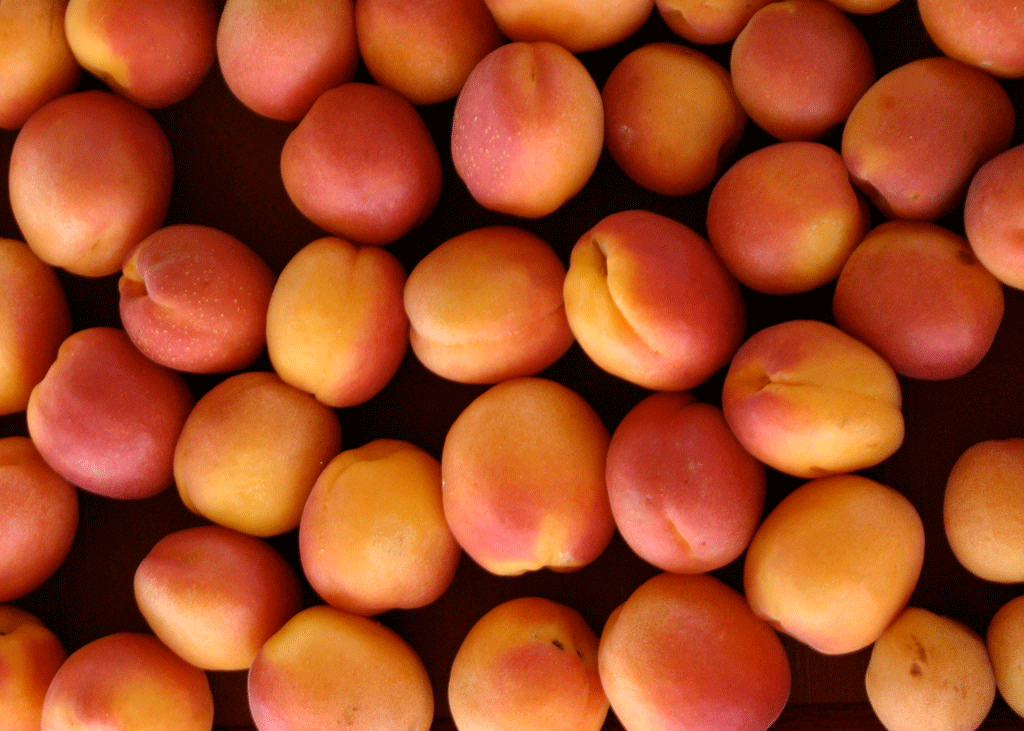We had the first harvest of ‘Tilton’ apricots four years after planting the bareroot tree. They all came ripe at once, seemingly overnight, turning a golden peachy hue, and when we gave them a little squeeze, there was just the slightest give to the fruit. We filled buckets with 23 pounds of delicious juicy fruits, while the bees buzzed in anger at us taking the sugar-filled apricots away from them so quickly. They keep well refrigerated, but with so many, we cut them in half, pulled out the seed, and put them cut side down on racks in the food dehydrator for about 72 hours. Dried this way, they store for up to a year, but they never made it that long, as I love the dried fruit more than freshly picked right off the tree.
Recommended Varieties
Apricots are more cold-hardy than peaches, but bloom early, subjecting them to late frosts causing the flowers to abort. Choose late season bloomers, situate the trees on slopes away from down pockets or alongside buildings for warmth and protection. Buy from your local nursery and consult the Cooperative Extension for variety and cultivation recommendations.
‘Mormon’ is self-fertile, hardy to Zone 4, blooms late, early bearing. ‘Tilton’ is hardy, resistant to light frost, self-fertile. ‘Sungold’ is smaller to 15 feet, hardy, developed in Minnesota and high in sugar. P. a. mandshurica, Manchurian apricot, is claimed to be the hardiest apricot with small size good for containers. ‘Goldcot’ is bred for colder climates. ‘Floragold’ is dwarf to 8 to 10 feet.
Planting
Apricots grow to 15 to 20 feet tall, dwarf varieties to 8 to 10 feet. Space 15 feet apart in a full sun location where they can live for 20 to 30 years. Plant as bare roots in early spring in a well-draining soil amended with compost. For bare root planting information.
Maintenance
Apply complete fertilizer in spring, but use one low in nitrogen to encourage flower and fruit. Fertilize containerized trees again a couple of months later. Apply water slowly and deeply, keeping soil moist through harvest, then cut back on water to deep but infrequent watering, allowing the soil to dry between waterings.
Thin fruit in mid-spring so that they are 2 to 3 inches apart on the branch. Prune apricots after harvest to avoid wound-spreading diseases. Prune for an open center.
Pest Problems
Apricots are subject to verticillium. Plant in areas that have not recently had tomatoes, peppers, eggplant, berries, or potatoes. For other problems, contact the Cooperative Extension for diseases to watch for and preventative measures. The birds will peck at the fruits. Use netting when you start to see blush of color. Harvest as soon as they are ripe.
Harvesting
When fully mature, one tree can give over 100 pounds of fruit. Harvest when fruit is colored and just a bit soft when squeezed. Apricots dry well.


